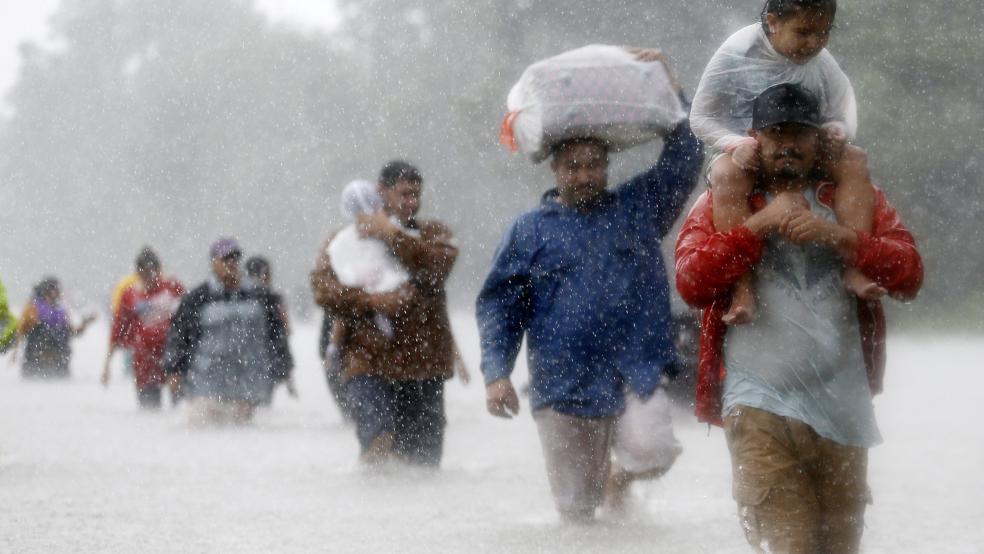The catastrophic flooding in Houston has put a spotlight on the problems with the National Flood Insurance Program and renewed calls for the country to “dramatically rethink” the program.
THE PROBLEM: The program is nearly $25 billion in debt and is set to expire at the end of September. Congress will have to renew or extend it so that millions don’t lose their coverage. Yet the troubled program likely made the fallout from Hurricane Harvey more expensive by encouraging redevelopment of flood-prone areas.
“There’s perhaps no better case study in how stubbornly America refuses to engage with climate change—and the hard choices that come along with it—than federal flood insurance, a massive, wasteful, and unnecessary giveaway of a program,” writes David Dayen at the New Republic.
Politico’s Michael Grunwald points to a 1998 report by the National Wildlife Federation that showed that 2 percent of the properties insured under the program were getting 40 percent of its damage claims. One Houston home flooded 16 times in 18 years, “netting its owners more than $800,000 even though it was valued at less than $115,000.”
THE HISTORY: The program was created in 1968 to provide mandatory insurance in flood-prone areas. It was supposed to help mitigate risky development, Grunwald notes, by imposing higher flood-proofing standards on new construction in floodplains and requiring certain properties to be elevated or moved. “But most of the program’s 100-year flood maps are woefully obsolete, relocation almost never happens, and Uncle Sam has continued to cut multiple checks for repetitive losses,” Grunwald writes.
Efforts to raise insurance premiums to better reflect flood risk have been met with resistance from the real estate industry and politicians representing the areas affected; a 2012 bill passed by Congress was largely gutted two years later in the face of a backlash from affected communities. In the meantime, the program has had to borrow billions from the Treasury because of claims arising from storms like Katrina and Sandy.
THE KEY QUOTE: “The fundamental responsibility of government is to protect people, but this program keeps encouraging people to build in harm’s way,” Steve Ellis, vice president of Taxpayers for Common Sense, told Politico.





